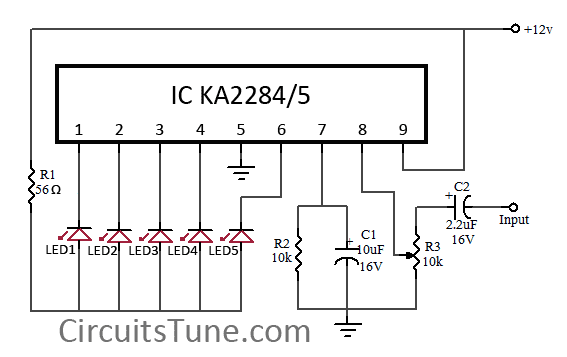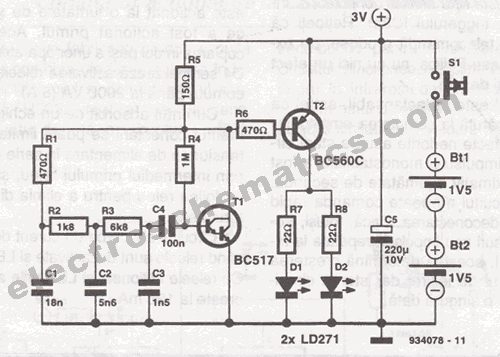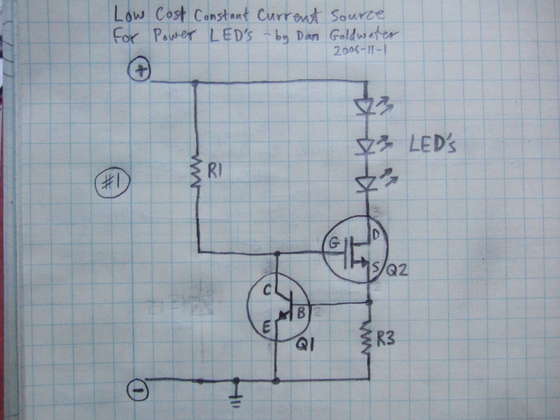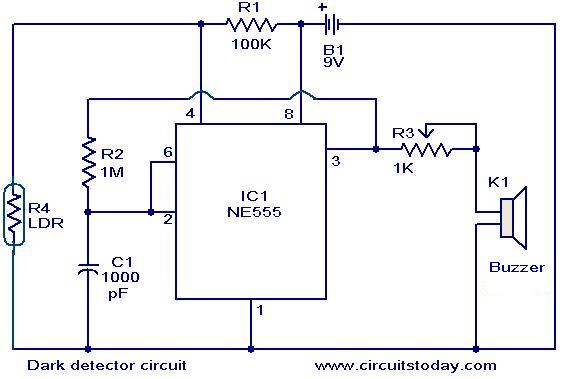
5 LED VU meter circuit diagram using KA2284

This is a simple circuit diagram of a 5-LED audio VU meter utilizing the ICs KA2284 or KA2285. The KA2284 and KA2285 are monolithic integrated circuits designed as logarithmic display driver ICs. They serve as bar-type display drivers for 5-dot LED configurations. The KA2284/KA2285 supports a wide supply voltage range of 3.5V to 16V, with a recommended operating voltage of approximately 12V DC.
The 5-LED audio VU meter circuit employs the KA2284 or KA2285 integrated circuits to provide a visual representation of audio signal levels. These ICs are specifically designed for driving LED displays, allowing for a straightforward implementation of an audio level indicator. The circuit typically comprises a power supply unit, the KA2284/KA2285 IC, five LEDs, and associated passive components such as resistors and capacitors.
The operation of the circuit begins with the audio input signal being fed to the KA2284/KA2285 IC. The IC processes the audio signal and converts it into a logarithmic representation suitable for driving the LEDs. As the audio signal level increases, the IC activates the LEDs in a sequential manner, creating a visual bar graph effect that corresponds to the amplitude of the audio signal.
The recommended power supply of 12V DC ensures optimal performance of the circuit within the specified voltage range. The use of resistors in series with the LEDs is crucial for current limiting, preventing damage to the LEDs while ensuring adequate brightness. Capacitors may also be included in the circuit for noise filtering, enhancing the stability and accuracy of the audio level readings.
In summary, the 5-LED audio VU meter circuit using the KA2284/KA2285 provides an effective and visually appealing method for monitoring audio levels, making it suitable for various applications in audio equipment and sound systems. The simplicity of the design allows for easy integration into existing systems, while the logarithmic scaling of the display offers a more intuitive representation of audio signal levels.This is a simple circuit diagram of 5-LED audio VU meter using IC KA2284/KA2285. The KA2284, KA2285 are monolithic integrated circuit. It is a logarithmic display driver IC. And it is Bar type display driver using 5-Dot LED. The KA2284/KA2285 has a wide range supply voltage capacity of 3. 5V-16V, but we recommend to use about a 12VDC power supply. 🔗 External reference
The 5-LED audio VU meter circuit employs the KA2284 or KA2285 integrated circuits to provide a visual representation of audio signal levels. These ICs are specifically designed for driving LED displays, allowing for a straightforward implementation of an audio level indicator. The circuit typically comprises a power supply unit, the KA2284/KA2285 IC, five LEDs, and associated passive components such as resistors and capacitors.
The operation of the circuit begins with the audio input signal being fed to the KA2284/KA2285 IC. The IC processes the audio signal and converts it into a logarithmic representation suitable for driving the LEDs. As the audio signal level increases, the IC activates the LEDs in a sequential manner, creating a visual bar graph effect that corresponds to the amplitude of the audio signal.
The recommended power supply of 12V DC ensures optimal performance of the circuit within the specified voltage range. The use of resistors in series with the LEDs is crucial for current limiting, preventing damage to the LEDs while ensuring adequate brightness. Capacitors may also be included in the circuit for noise filtering, enhancing the stability and accuracy of the audio level readings.
In summary, the 5-LED audio VU meter circuit using the KA2284/KA2285 provides an effective and visually appealing method for monitoring audio levels, making it suitable for various applications in audio equipment and sound systems. The simplicity of the design allows for easy integration into existing systems, while the logarithmic scaling of the display offers a more intuitive representation of audio signal levels.This is a simple circuit diagram of 5-LED audio VU meter using IC KA2284/KA2285. The KA2284, KA2285 are monolithic integrated circuit. It is a logarithmic display driver IC. And it is Bar type display driver using 5-Dot LED. The KA2284/KA2285 has a wide range supply voltage capacity of 3. 5V-16V, but we recommend to use about a 12VDC power supply. 🔗 External reference





